French Cooking with Herbs
May 19, 2014
This is the text version of a presentation I just did at It’s About Thyme in Austin, TX.
Here is my personal list of French herbs and their principal uses in French cooking. In almost all cases, fresh herbs will give dramatically better results than their dried counterparts. However, some freeze dried herbs can give you really good flavors as well.
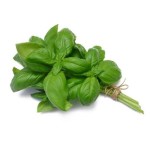 Basil – Basilic – Basil is used almost exclusively in its fresh state, although basil preserved in oil does retain its flavor. Used all over Mediterranean cuisine – tomato goat cheese salad, eggs, pasta, chicken, fish, vinaigrette recipes and of course pesto. While in season, use all the fresh basil you have, make a large batch of pesto with it and freeze in small containers or ice cube trays.
Basil – Basilic – Basil is used almost exclusively in its fresh state, although basil preserved in oil does retain its flavor. Used all over Mediterranean cuisine – tomato goat cheese salad, eggs, pasta, chicken, fish, vinaigrette recipes and of course pesto. While in season, use all the fresh basil you have, make a large batch of pesto with it and freeze in small containers or ice cube trays.
See: Apricot and Basil Pesto Chicken (Paleo). Niçoise-style Tomato Soup (GF). Ratatouille (both).
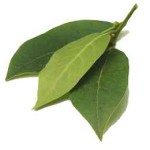 Bay Leaf – Laurier – Sweet bay or bay laurel is the only type used in cooking. Its dried leaves have a sharp and pronounced taste. They are used in stews, poaching liquids, and marinades. Normally one bay leaf is enough to flavor a whole dish and it is always removed before serving.
Bay Leaf – Laurier – Sweet bay or bay laurel is the only type used in cooking. Its dried leaves have a sharp and pronounced taste. They are used in stews, poaching liquids, and marinades. Normally one bay leaf is enough to flavor a whole dish and it is always removed before serving.
See: Provencal Sage and Garlic Soup (Paleo). Pork Stew with Capers (GF).
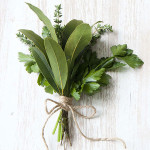 Bouquet Garni – A bouquet garni is a bunch of assorted French herbs tied together with kitchen twine and added to soups, stews and sauces. The following classic French dishes, Boeuf Bourguignon, Soupe a l’Oignon, Bouillabaise, Blanquette de Veau, Poule au Pot and Cassoulet are flavored with a bouquet garni.
Bouquet Garni – A bouquet garni is a bunch of assorted French herbs tied together with kitchen twine and added to soups, stews and sauces. The following classic French dishes, Boeuf Bourguignon, Soupe a l’Oignon, Bouillabaise, Blanquette de Veau, Poule au Pot and Cassoulet are flavored with a bouquet garni.
What herbs you choose to put together is up to what is available nearby but the classic choice is thyme, bay leaf, and sage. Depending on the dish, other choices can be parsley, basil, burnet, chervil, rosemary, peppercorns, savory and tarragon. Some cooks like to add vegetables such as carrot, celery leaves, celeriac, leek, and onion.
The bouquet is not always bound with string. Its ingredients can be placed into a small sachet, a net like a cheesecloth, a coffee filter, a used bas (hose) or even a tea strainer.
See: Green Cabbage and Smoked Sausage Soup (Paleo).
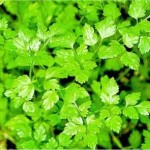 Chervil – Cerfeuil – This is a very common herb in French cooking. It has a subtle anise taste and is usually used fresh in salads, soups, and omelets and added at the last minute.
Chervil – Cerfeuil – This is a very common herb in French cooking. It has a subtle anise taste and is usually used fresh in salads, soups, and omelets and added at the last minute.
See: Stuffed Veal Breast with Honey-Roasted Apples (Paleo).
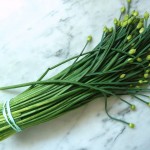 Chives – Ciboulette – Chives come from the same family as onions, the allium family. They have a flavor between onion and garlic. They should always be used fresh as the freeze dried version has no flavor. Chives can be used in vinaigrettes and sauces, with eggs, and also as a final garnish. To get the best of their spicy flavor, always chop chives finely just before you use them and sprinkle over your dish.
Chives – Ciboulette – Chives come from the same family as onions, the allium family. They have a flavor between onion and garlic. They should always be used fresh as the freeze dried version has no flavor. Chives can be used in vinaigrettes and sauces, with eggs, and also as a final garnish. To get the best of their spicy flavor, always chop chives finely just before you use them and sprinkle over your dish.
See: Celeriac Salad with Apples and Pecans (Paleo).
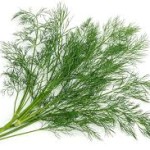 Dill – Aneth – Dill seed is used in marinades or to flavor vinegars. Fresh dill is used with fish (notably salmon), cucumbers, omelets, salads, pasta and dill sauce. Dried dill is rarely used as such.
Dill – Aneth – Dill seed is used in marinades or to flavor vinegars. Fresh dill is used with fish (notably salmon), cucumbers, omelets, salads, pasta and dill sauce. Dried dill is rarely used as such.
See: Zucchini Chips with Lemon and Dill (Paleo). Garden Pasta Tuna Salad (GF).
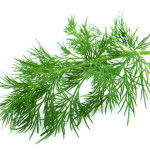 Fennel – Fenouil – Fennel is a beautiful herb with fine feathery green leaves similar to dill but its flavor has a sweet anise flavor instead.
Fennel – Fenouil – Fennel is a beautiful herb with fine feathery green leaves similar to dill but its flavor has a sweet anise flavor instead.
Fennel is often flavoring oven-roasted fish. Its seeds or leaves give an excellent flavor when steeped in the water used to poach fish. Finely chopped leaves give a wonderful flavor to a fish sauce and counteracts oily fish heaviness. You can pull the leaves and add to salads or raw or cooked vegetables. Dried seeds are used whole or ground to flavor bread, biscuits, soups and pickles.
See: Pumpkin Soup with Fennel and Pastis (Paleo). Pink Grapefruit Millefeuilles with Olive Tapenade (Paleo). Mullet and Sweet Potato Cake (Paleo).
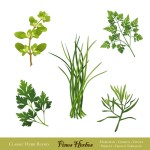 Fines herbes – This term designates a mix of finely chopped fresh French herbs, including marjoram, parsley, chives, tarragon and chervil. Unlike bouquet garni containing pungent and resinous herbs, fines herbes are always used fresh. If you feel creative, you can add marjoram or oregano, cress,cicely, or lemon balm. Typically they are added to recipes at the last minute. Fines herbes can also be used to make compound butters and to flavor an omelet.
Fines herbes – This term designates a mix of finely chopped fresh French herbs, including marjoram, parsley, chives, tarragon and chervil. Unlike bouquet garni containing pungent and resinous herbs, fines herbes are always used fresh. If you feel creative, you can add marjoram or oregano, cress,cicely, or lemon balm. Typically they are added to recipes at the last minute. Fines herbes can also be used to make compound butters and to flavor an omelet.
 Marjoram – Marjolaine – This herb is similar to oregano but not as strong. It has a sweet pine and citrus flavor. Marjoram can be used fresh, dried or freeze dried and can be found in soups, stews, vinaigrettes and sauces.
Marjoram – Marjolaine – This herb is similar to oregano but not as strong. It has a sweet pine and citrus flavor. Marjoram can be used fresh, dried or freeze dried and can be found in soups, stews, vinaigrettes and sauces.
See: Beef Vegetable Soup (GF).
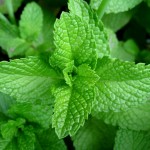 Mint – Menthe – Several different varieties of mint are used in cooking, but the most common is sweet mint, or spearmint. I like to add it finely chopped to salads, with peas, rice, soups, sauces and also with meats like lamb dishes. Peppermint is used to prepare drinks like teas, alcoholic drinks (mojito, mint julep) and digestive liqueurs. You can find it in candies and breath mints and desserts like mint jelly and sorbet. Dried mint preserves its flavor for a long time and is a good alternative if fresh is unavailable.
Mint – Menthe – Several different varieties of mint are used in cooking, but the most common is sweet mint, or spearmint. I like to add it finely chopped to salads, with peas, rice, soups, sauces and also with meats like lamb dishes. Peppermint is used to prepare drinks like teas, alcoholic drinks (mojito, mint julep) and digestive liqueurs. You can find it in candies and breath mints and desserts like mint jelly and sorbet. Dried mint preserves its flavor for a long time and is a good alternative if fresh is unavailable.
See: Raw Apple Cucumber Mint Verrine (Paleo). Grapefruit and Seafood Salad (Paleo). Quinoa Tabouleh (GF).
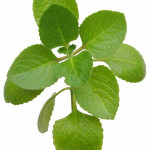 Oregano – Origan – This wild cousin to marjoram has an assertive, piney taste. It is best used fresh, although it is also available dried or frozen. Oregano is used in Mediterranean dishes like pizza, grilled fish and in tomato sauces. It complements basil and thyme well.
Oregano – Origan – This wild cousin to marjoram has an assertive, piney taste. It is best used fresh, although it is also available dried or frozen. Oregano is used in Mediterranean dishes like pizza, grilled fish and in tomato sauces. It complements basil and thyme well.
See: Radish Tops and Apple Soup (Paleo). Zucchini Soup (GF).
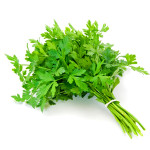 Parsley – Persil – Fresh parsley is a widely available herb used virtually year round in many part of the world. Typically there are two types: curly used as garnish and flat leaf for cooking. Flat leaf parsley has a stronger flavor and holds up better when cooked. You can add parsley to just about dishes like Boeuf Bourguignon or Goulash and well as on boiled or mashed potatoes, rice dishes. You can find it front and center in Taboulé. In France, we combine with garlic to make persillade, used in escargots, oysters on the half shell, and Pommes Persillade.
Parsley – Persil – Fresh parsley is a widely available herb used virtually year round in many part of the world. Typically there are two types: curly used as garnish and flat leaf for cooking. Flat leaf parsley has a stronger flavor and holds up better when cooked. You can add parsley to just about dishes like Boeuf Bourguignon or Goulash and well as on boiled or mashed potatoes, rice dishes. You can find it front and center in Taboulé. In France, we combine with garlic to make persillade, used in escargots, oysters on the half shell, and Pommes Persillade.
See: Pumpkin Soup with Fennel and Pastis (Paleo). Almond Crumbled Salmon (Paleo). Quinoa Tabouleh (GF). Tuna Côte d’Azur-style (GF).
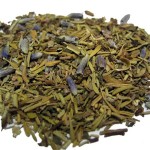 Provencal Herbs – Herbes de Provence are a mixture of aromatic dried French herbs including savory, marjoram, rosemary, thyme, oregano, and sometimes even lavender.They are used to flavor anything from grilled foods like fish and meats, to vegetable stews. Some goat cheeses that are covered with Herbes de Provence as well.
Provencal Herbs – Herbes de Provence are a mixture of aromatic dried French herbs including savory, marjoram, rosemary, thyme, oregano, and sometimes even lavender.They are used to flavor anything from grilled foods like fish and meats, to vegetable stews. Some goat cheeses that are covered with Herbes de Provence as well.
See: Slow-Roasted Provencal Veggies with Herbs (Paleo). Ratatouille (Paleo and GF). Corn Bread with Herbes de Provence (GF). Provencal-Style Macaroni (GF).
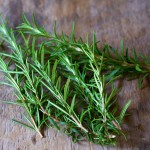 Rosemary – Romarin – Rosemary is one of my favorite herbs. Its leaves are needle-shaped and have a strong lemon or pine smell. It is widely used in Mediterranean cuisine as is grows everywhere in the south. Fresh or dried, rosemary should be used with moderation. Its leaves are used in marinades and to flavor foods such as grilled meats, stews, roast lamb, pork, chicken and turkey stuffing.
Rosemary – Romarin – Rosemary is one of my favorite herbs. Its leaves are needle-shaped and have a strong lemon or pine smell. It is widely used in Mediterranean cuisine as is grows everywhere in the south. Fresh or dried, rosemary should be used with moderation. Its leaves are used in marinades and to flavor foods such as grilled meats, stews, roast lamb, pork, chicken and turkey stuffing.
See: Herbs and Pecan Scones (Paleo). Southern France Meat Loaf (Paleo). Zucchini Soup (GF). Rosemary Lamb Chops (GF).
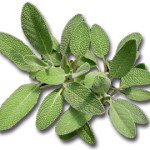 Sage – Sauge – Sage has a savory and slightly peppery flavor. Although fresh sage leaves have a subtle flavor, they taste wonderful when added to salad dressing, soups, or sauces during the final moments of cooking. In its dried form, it is used all over Europe, sage is rarely found in French cuisine. In British and American cooking, you can find it as sage and onion stuffing for roasted chicken or turkey, casseroles and sausages.
Sage – Sauge – Sage has a savory and slightly peppery flavor. Although fresh sage leaves have a subtle flavor, they taste wonderful when added to salad dressing, soups, or sauces during the final moments of cooking. In its dried form, it is used all over Europe, sage is rarely found in French cuisine. In British and American cooking, you can find it as sage and onion stuffing for roasted chicken or turkey, casseroles and sausages.
See: Provencal Sage and Garlic Soup (Paleo). Grilled Pork Chops in Mustard and Sage (Paleo). Garbanzo Bean Soup with Sage (GF). Pork Stew with Capers (GF).
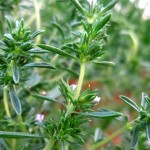 Savory – Sarriette – This herb, used fresh or dried, flavors stews and marinades. Its leaves have been used as condiment ever since the Antiquity. It is used to enhance grilled meats such as lamb and pork as well as sauces and flavoring for pates and sausages. It is also known to help digest beans.
Savory – Sarriette – This herb, used fresh or dried, flavors stews and marinades. Its leaves have been used as condiment ever since the Antiquity. It is used to enhance grilled meats such as lamb and pork as well as sauces and flavoring for pates and sausages. It is also known to help digest beans.
See: Provencal Lamb Stew with White Wine (Paleo). Tuna Côte d’Azur-style (GF).
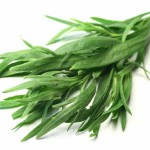 Tarragon – Estragon – Tarragon has a strong, somewhat licorice-like taste. You can use it fresh, frozen, or dried. It is one of the four fines herbes and is tasty when cooked with chicken, fish and egg dishes. Tarragon is the main flavoring component of Béarnaise sauce and compound butter. Fresh, slightly crushed tarragon sprigs are steeped in vinegar to produce the wonderful tarragon vinegar.
Tarragon – Estragon – Tarragon has a strong, somewhat licorice-like taste. You can use it fresh, frozen, or dried. It is one of the four fines herbes and is tasty when cooked with chicken, fish and egg dishes. Tarragon is the main flavoring component of Béarnaise sauce and compound butter. Fresh, slightly crushed tarragon sprigs are steeped in vinegar to produce the wonderful tarragon vinegar.
See: Paprika Shrimp with Chorizo and Vegetables Medley (Paleo). Tenderloin Rossini (Paleo).
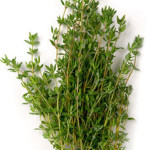 Thyme – Thym – Thyme is an herb that is equally good fresh or dried. It is part of the bouquet garni I talked about earlier. It is widely used in Provencal cuisine with tomatoes, beans, stews like cassoulet.
Thyme – Thym – Thyme is an herb that is equally good fresh or dried. It is part of the bouquet garni I talked about earlier. It is widely used in Provencal cuisine with tomatoes, beans, stews like cassoulet.
See: Coq au Vin Rouge (Paleo). Rabbit Cider Stew with Prunes (Paleo). Niçoise-style Tomato Soup (GF). Pork Stew with Capers (GF).
Please note: (Paleo) refers to my book: Paleo French Cuisine and (GF) refers to: Living Gluten and Dairy-Free with French Gourmet Food recipes.
Salade de Roquette aux Fraises et sa Vinaigrette au Miel
Arugula Salad with Strawberries and Honey Vinaigrette
This lovely salad can make a complete yet light lunch meal. I love it with red wine vinegar but feel free to use organic apple cider vinegar instead. Depending on your mood, you can also use alternate nuts: pecan, walnuts, hazelnuts, etc.
Servings: 4
Preparation Time: 15 minutes
Ingredients
Salad
4 handfuls of arugula salad
8 strawberries, rinsed and dried
1 oz pine nuts, toasted (1/4 cup)
4 slices of Parma or prosciutto ham (2 oz)
Vinaigrette
4 Tbsp extra virgin olive oil
2 Tbsp red wine vinegar
1 Tbsp acacia or local honey
1 small shallots, minced
2 pinches sea salt
1 pinch ground black pepper
Procedure
1. Wash arugula, drain and arrange on four plates.
2. Wash strawberries, dry and remove stems, Cut into quarters and spread them on the salad.
3. Dry sauté the pine nuts in a hot frying pan until fragrant.
4. Tear the Parma ham and scatter over the salad.
5. Sprinkle the toasted pine nuts on top.
6. In a bowl, whisk together the olive oil, vinegar, shallot, honey, salt and pepper.
7. Drizzle the dressing on the salad plates. Serve immediately.
= Chef’s tip: If you’re not allergic to cheese, crumble goat cheese or feta over the salad. Or you can add Parmesan cheese shavings on top.
Bon Appetit! Chef Alain
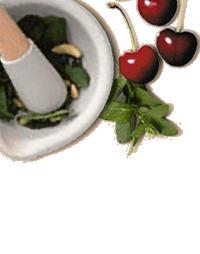
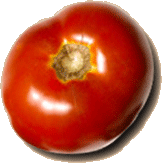
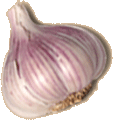
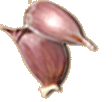
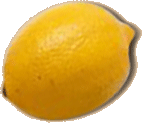
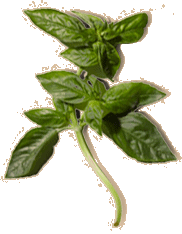
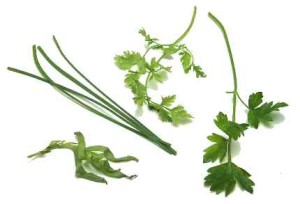
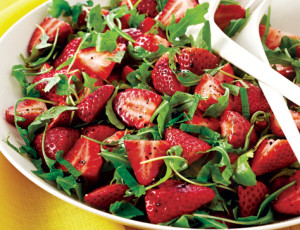

6 comments